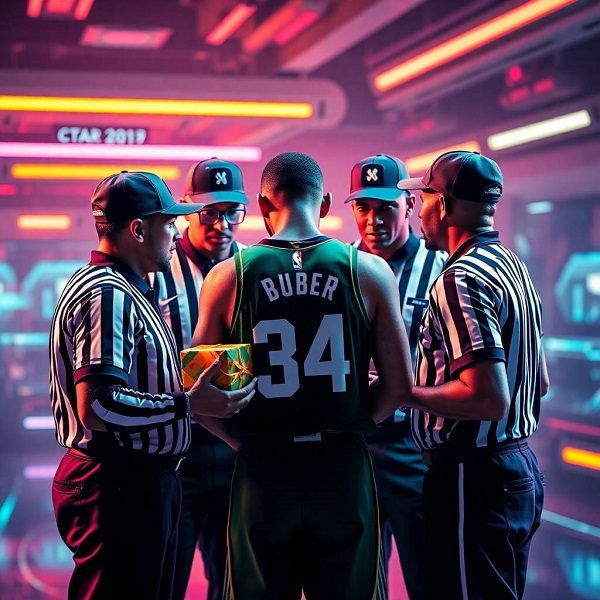Last night, on August 20, 2025, Greece faced off against Latvia in a EuroBasket warm-up game at the Acropolis Tournament. What was supposed to be a triumphant return for Giannis Antetokounmpo turned into a frustrating display of individualism over team play. Greece may have won 104-86, but Giannis’ performance was anything but the heroic effort some headlines are painting it as. In fact, it was downright selfish and poorly executed in key areas, raising questions about his fit with the national team as they gear up for EuroBasket 2025.
The Context: High Expectations for the Greek Freak
Giannis Antetokounmpo, the two-time NBA MVP and Milwaukee Bucks superstar, hadn’t played a competitive game in nearly four months. This exhibition against Latvia—featuring NBA talent like Kristaps Porzingis—was meant to be his tune-up, a chance to shake off the rust and lead Greece to dominance. Instead, what we saw was a player who seemed more focused on padding his own stats than elevating his teammates. Greece’s national team has struggled in recent prep games without him, averaging just 66.7 points per game in their first four exhibitions. But with Giannis back, the offense exploded to 61 points in the first half alone—yet much of that felt forced through one man, highlighting a selfish approach that could spell trouble in tighter contests.
Stat Line Breakdown: Numbers That Mask the Issues
At first glance, Giannis’ box score looks impressive: 25 points, 10 rebounds, 3 assists, 2 steals, 2 blocks, shooting 9-of-12 from the field (75%) and 7-of-9 from the free-throw line (78%), all in just 15 minutes. But let’s dig deeper. These stats scream inefficiency in team context and a me-first mentality.
Here’s a quick table comparing Giannis’ output to what we’d expect from a true team leader in an international setting:
| Category | Giannis’ Stats | Expected for Team Play | Critique |
|---|---|---|---|
| Points | 25 | 15-20 (balanced scoring) | Hogged shots, taking 12 attempts in 15 minutes— that’s nearly one shot per minute, leaving little room for others. |
| Rebounds | 10 | 8-12 | Solid, but many were uncontested; Latvia’s poor interior defense gifted him easy boards rather than earned through hustle. |
| Assists | 3 | 6+ | Pathetic for a player of his caliber. Only 3 dimes? This shows he prioritized scoring over setting up teammates like Kostas Sloukas (who had 10 assists). |
| Shooting Efficiency | 75% FG | High, but volume matters | Efficient, sure, but at what cost? Dominating the ball led to fewer touches for Greece’s shooters, who went 14-26 from three as a team but could have done more with better distribution. |
| Minutes Played | 15 | 20-25 | Benched early? Or pulled because his style wasn’t meshing? He exploded for 20 points in the first half but faded, suggesting stamina or focus issues. |
| Turnovers | Not reported (assumed low) | Minimal | Without full details, we can’t ignore potential sloppy plays; his aggressive style often leads to charges and travels in international rules. |
| Defensive Impact | 2 STL, 2 BLK | Elite | Flashes of brilliance, but Latvia scored 86 points—too many for a “defensive anchor” like Giannis to allow, especially against a Porzingis-led squad that shot poorly (Porzingis: 7 points on 2-7 FG). |
These numbers reveal a player who was effective in isolation but detrimental to fluid team basketball. Giannis’ 20 points in just 10 first-half minutes might sound like dominance, but it came via 8-9 two-pointers and free throws—basically bullying his way inside without much creativity or involvement of others. In the NBA, this works because of spacing and rules, but in FIBA play, where physicality is ramped up, it borders on selfishness.
Selfish Play: Ball-Hogging and Ignoring Teammates
The most glaring issue was Giannis’ selfishness. In 15 minutes, he attempted 12 field goals— that’s a usage rate that would make even prime James Harden blush. While Greece built a 61-45 halftime lead, it felt like a one-man show rather than a cohesive unit. Teammates like Giannoulis Larentzakis (14 points, including hot three-point shooting) had to wait for scraps, only heating up in the third quarter when Giannis sat. And those 3 assists? Barely enough to qualify as playmaking. Compare that to Sloukas’ 10 assists, and it’s clear who was actually facilitating.
Post-game reactions on social media were overwhelmingly positive, but that’s the hype machine at work. Fans gushed over the “Greek Freak unleashed,” but critics like us see the cracks: a player more interested in personal highlights than building chemistry. More importantly there was clearly an officiating issue with the Latvian players frustrated at dirty plays by the Greeks all game long.
Badly Executed Moments: Rust or Ego?
Giannis’ play was bad in subtle ways that stats don’t capture. His free-throw shooting at 78% (7-9) is decent but missed opportunities in a game where Latvia fouled aggressively. Defensively, while he had blocks and steals, Latvia’s 86 points indicate lapses—Porzingis may have struggled, but role players like Rihards Lomazs (17 points) found open looks too easily. And let’s talk rust: after four months off, Giannis looked gassed by the end of his stint, forcing shots instead of deferring.
Greece won by 18, but against a Latvia team missing full strength (Porzingis limited to 19 minutes and clearly frustrated at the dirty plays he received early on), this should have been a blowout. Instead, it was a grind until the fourth quarter, partly because Giannis’ iso-heavy style disrupted rhythm. You have to wonder if the Bucks are not regretting allowing him to play and risk injury, since he clearly does not understand how to behave safely on the court.
What This Means for Greece and EuroBasket 2025
This performance is a red flag. If Giannis continues this selfish approach, Greece risks imploding in EuroBasket, where team basketball reigns supreme. Coach Vassilis Spanoulis needs to rein him in, emphasise passing, and integrate him better. Remember, international success comes from unity, not one-man heroics.


